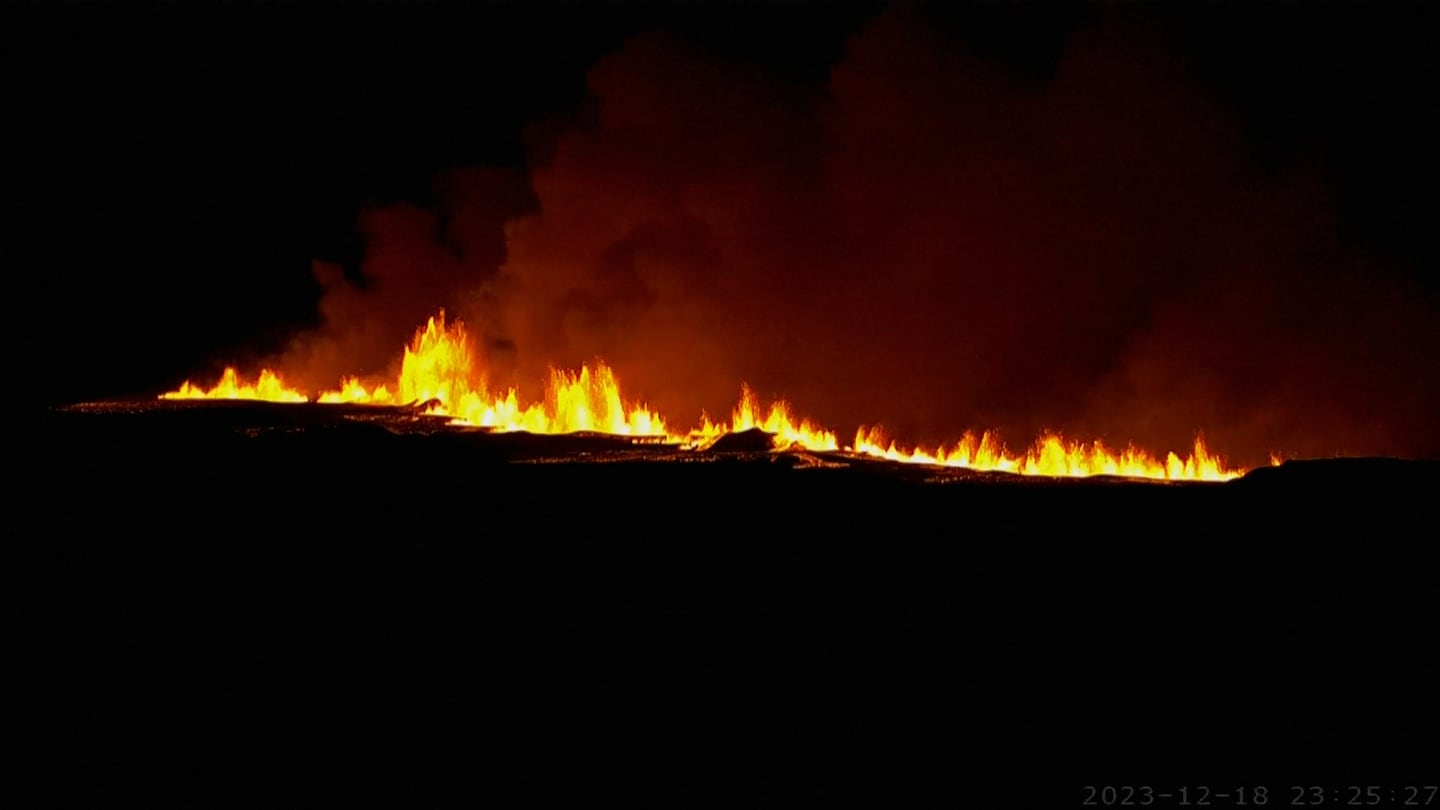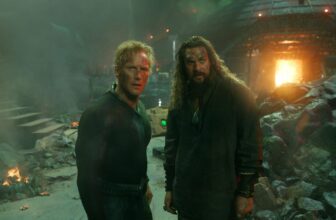A volcanic eruption is underway in southwestern Iceland, sending magma to the surface north of the town of Grindavik, the country’s weather service said Monday night.

[ad_1]
The eruption was preceded by a “seismic storm” on the Reykjanes peninsula, the Japan Meteorological Agency said, and the eruption began about 10:15 p.m. local time about three miles northeast of Grindavik. Coast Guard authorities were investigating.
Police ordered around 4,000 residents of Grindavik to leave on November 10 after scientific measurements revealed a magma tunnel extending beneath the coastal town. Grindavik is not far from the Blue Lagoon, Iceland’s famous geothermal spa resort, which has been closed as a safety precaution.
According to an X post from the Lava Center Museum, the lava appeared to be moving north away from Grindavik.
Icelandic President Gudni Torlasius Johannesson posted on Facebook that it was unclear how much damage the eruption would cause. He said the priority was to save lives, but authorities would do everything in their power to protect structures.
Iceland, also known as the land of fire and ice, is located on plates that move in opposite directions, making it easy for magma to rise and is a place of high volcanic activity. This country has more than 30 active volcanoes.
However, it was the first time in half a century that a large, densely populated area had to be completely evacuated in anticipation of an eruption. The long-standing threat of an eruption raised fears of a destructive lava flow, but scientists downplayed the potential for significant disruption to global travel or deterioration of air quality in the Northern Hemisphere.
Magma moving beneath the Earth’s crust triggered tens of thousands of earthquakes in the region in October and November. Buildings are damaged, roads are cut off, and some parts become impassable.
Exactly where the volcanic system would erupt was a matter of uncertainty and great anxiety. This volcano was not the typical volcano that people think of, a cone-shaped mountain spewing lava. This includes a more stealthy, more unpredictable underground flow of magma tunneling beneath the Reykjanes Peninsula and slowing its way toward the surface.
“All volcanoes are humbling in some way, but the ones that show up whenever you want to are really humbling,” says Robin, volcanologist, science writer, and author of Super Volcanoes. – Andrews said before Monday’s eruption. “We may think we’re all strong and powerful, but we can’t predict what’s going to happen, and we just have to deal with it when it happens. These rifts open up. It’s possible. It’s crazy. It’s like magic or something.”
Andrews then explained The cracks of the Icelandic eruption were seen as a “beast”.
Magnus Tumi Guðmundsson, a professor of geophysics at the University of Iceland, said lava is flowing over parts of Grindavik and the Svartsengi geothermal power plant, which provides electricity to about 30,000 people and helps heat their homes. He said his main concern was that it could reach . . The factory is currently operating remotely.
“There could be quite a bit of disruption and a lot of damage,” Guðmundsson said ahead of the eruption. “It’s pretty serious that we have to evacuate 3,700 people and we don’t know when they will be able to return.”
Brindis Gunnlaugsdóttir, 42, a lawyer and former Grindavik City Council leader, said he was “very proud” of his city but “very worried”.
“There’s all this financial anxiety,” she says. “But I also wonder, ‘Is my town still there?'” Our feelings are all over the place. ”
The town is known to be in an area of high seismic activity, and the nearby Fagradalsfjall volcano has erupted every three years, but the underground lava has been detected so close by. Residents were surprised, she said. “In all the scenarios that have been portrayed over the years, the volcano was always supposed to erupt all around us, but not in town. I never felt it,” she said.
Still, she said many residents have long been making personal evacuation plans. Her job included preparing a “memory box” of sentimental items, including photos of her parents, trophies, and kindergarten drawings. On the night of Nov. 10, after “a constant series of unbearable earthquakes,” she grabbed a box from her garage and left town.
“Icelanders are very aware of the dynamic and changing nature of their country’s volcanoes, and everyone knows what’s going on,” Andrews said. “In times of disaster, it often takes a lot of time to convince people to leave their homes. But the authorities here have not had to convince people to leave. Everyone understands that. , there’s no need to pander to anyone. It’s reassuring.”
All of Grindavik was evacuated by the early hours of November 11th. As the wait dragged on, residents were briefly allowed to return to collect belongings, including pets, left behind in their haste to leave.Animal protection groups also tried to evacuate. pet.
Before the eruption, volcano experts said the latest eruption was similar to that of the 2010 Eyjafjallajokull volcano in Iceland, which sent a huge plume of smoke flying over Europe and wreaked havoc on air travel around the world for weeks. It said it would not replicate the confusion caused by the incident. The volcano produced large amounts of fine ash due to how the erupting magma interacted with the ice sheet. But in this case there are no ice caps.
Ahead of the eruption, experts warned that disruption to aviation could still linger, and did not discount the risk of a cloud of toxic gas drifting into the air, particularly for downwind aircraft. In 1783, a toxic gas erupted from the Laki volcanic system, killing more than half of Iceland’s livestock and causing famine.
Guðmundsson said the eruption could be more serious than the recent Fagradalsfjall eruption, which has attracted volcano tourism. Icelandic band Kaleo performed an acoustic live performance against the backdrop of erupting lava in 2021.
The eruption “is not considered tourist-friendly,” Gudmundsson said. “This could result in lava flowing out and destroying infrastructure and homes.”
News organizations set up webcams on nearby volcanic cones so people could watch the eruption.
[ad_2]
Source link






